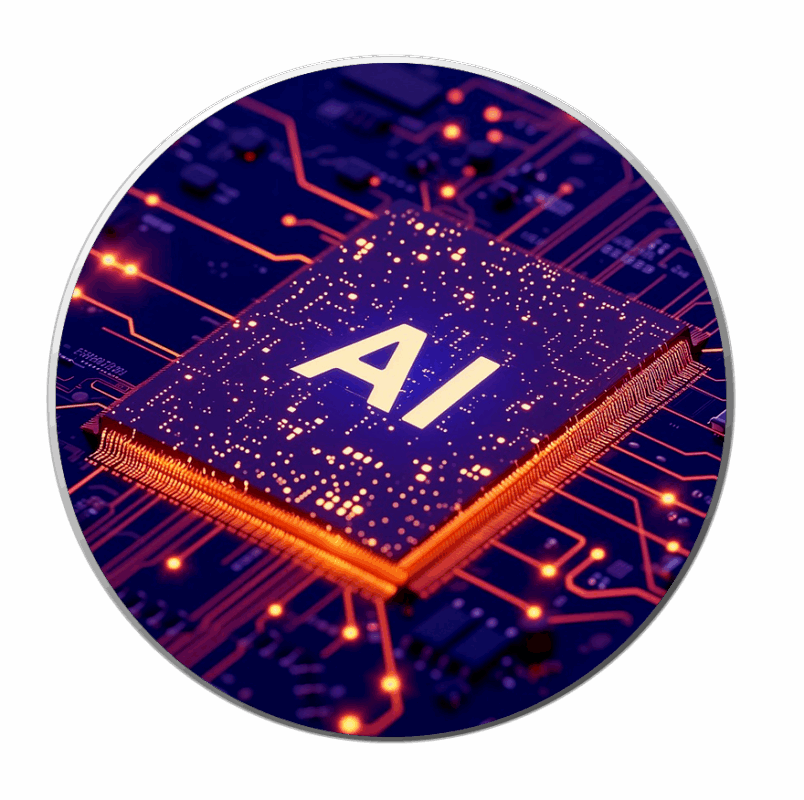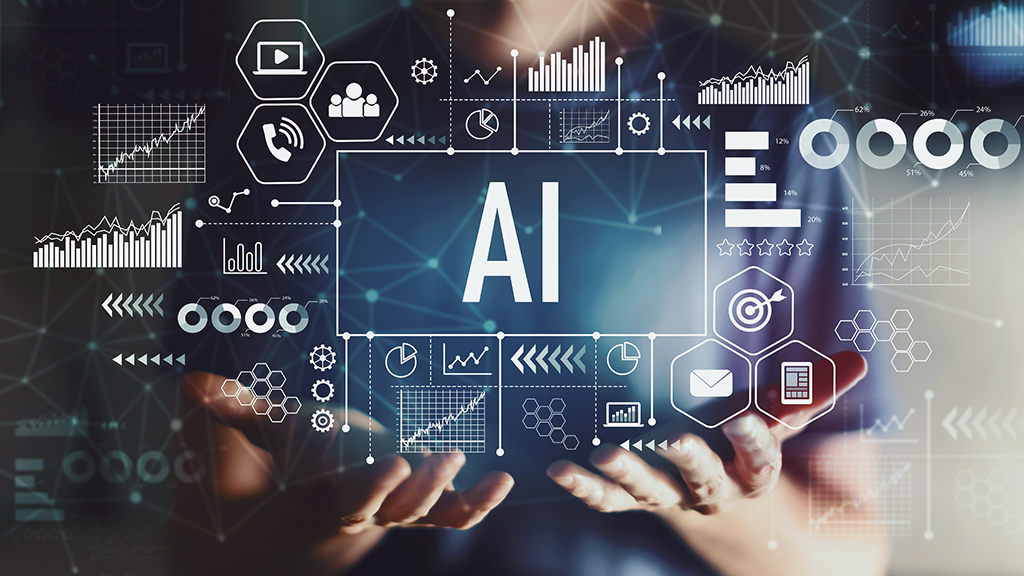
Customer expectations are rapidly changing in today’s fast-paced digital landscape. Instant responses, personalized experiences, and cross-channel help have all become the new standard. Traditional contact centers are trying to keep up, typically hampered by antiquated infrastructure, high call volumes, and increased customer expectations.
To address these difficulties, businesses are rapidly turning to AI for contact centers—a game-changing technology that reinvents customer service through intelligent automation, advanced analytics, and real-time insight. Companies may use artificial intelligence to streamline operations, empower agents, and provide excellent customer experiences at scale.
This new wave of innovation is about more than simply efficiency; it’s about improving the entire consumer experience. From better self-service to predictive interaction, AI contact center technology is influencing the future of customer service.
AI for contact centers refers to the use of artificial intelligence technologies such as machine learning, natural language processing (NLP), speech analytics, and predictive modeling to enhance and automate customer interactions. From intelligent chatbots and voice assistants to real-time sentiment analysis, AI empowers businesses to deliver faster, more personalized, and efficient service.

Implementing AI in contact center operations goes beyond automation—it drives measurable improvements in efficiency, customer satisfaction, and cost reduction. By combining intelligent technologies with human expertise, AI contact center solutions help businesses scale support, personalize experiences, and make smarter decisions. Below are the key benefits of transforming modern customer service.
AI-powered tools provide 24-hour support via chatbots and virtual assistants, guaranteeing that consumers receive immediate assistance without waiting in queues. Natural language understanding (NLU) makes these encounters feel more human-like and contextually aware.
AI handles routine tasks such as data entry, call routing, and basic inquiries, freeing up human agents to focus on complex or high-value interactions. AI also assists agents with real-time suggestions, knowledge base access, and call summaries, boosting productivity.
AI can process enormous amounts of data in real time, revealing trends in customer behavior, sentiment, and preferences. This allows contact centers to tailor encounters, anticipate future demands, and make data-driven decisions to improve service delivery.
AI reduces labor costs by automating repetitive operations and optimizes staff management, while preserving (or perhaps improving) service quality. Predictive analytics can also estimate call volumes, allowing for more effective staffing.
AI tools can monitor 100% of customer interactions, flagging potential compliance risks and ensuring quality standards are met. This level of oversight is impossible to achieve with manual monitoring alone.

The rise of AI for contact center operations has resulted in a formidable suite of tools that are redefining how organizations deal with their customers. These tools not only improve efficiency, but they also provide richer insights and more meaningful involvement. The following are the most important AI contact center technologies driving this transformation:
Conversational AI powers intelligent chatbots and virtual assistants that can interact in natural, human-like ways. These solutions use natural language processing (NLP) to interpret customer inquiries, respond accurately, and escalate complex situations to live operators as needed. In an AI contact center, conversational AI delivers rapid, consistent, and scalable support across several platforms, including online, mobile, and voice.
With speech and text analytics, businesses can analyze voice calls, emails, and chat transcripts in real time. This technology recognizes consumer sentiment, intent, emotion, and important themes, allowing agents to adapt responses on the fly. In an AI for contact center setting, this capability enhances service quality, supports compliance, and uncovers customer pain points.
Predictive analytics forecasts future customer behavior by using previous data and machine learning algorithms. Anticipating customer demands, optimizing agent schedules, projecting call volumes, and recognizing at-risk consumers are all examples of modern AI in the contact center.
RPA automates repetitive, rule-based tasks such as data entry, ticket updates, and account lookups. When integrated into an AI contact center, RPA enables seamless back-end automation triggered by customer interactions—freeing agents to focus on complex, high-value conversations.
Traditional quality assurance systems frequently rely on manual sampling, which can lead to the loss of key insights. AI-powered QA solutions proactively monitor all client interactions for compliance risks, service gaps, and agent performance issues. This results in more consistent service delivery and faster issue resolution in an AI-powered contact center strategy.
Intelligent call routing uses AI to analyze client data and direct inquiries to the best agent based on skills, availability, and context. This promotes speedier response, increased customer satisfaction, and shorter processing times. It’s an essential component of any advanced AI contact center solution.
Real-time agent assist tools act as co-pilots during live customer interactions. These artificial intelligence (AI)-powered systems notify agents to shifts in consumer attitude, uncover pertinent knowledge base articles, and suggest answers. This results in more confidence agent performance and higher first-call resolution rates in an AI in contact center environment.
Together, these technologies provide a more intelligent, responsive AI contact center that can satisfy the needs of modern consumers. AI’s influence on business intelligence, operational effectiveness, and customer experience will only increase as its capabilities advance.

Practical uses of AI in contact center operations demonstrate its genuine worth. AI is revolutionizing old service models into flexible, data-driven experiences, increasing customer satisfaction, and optimizing procedures across industries. Here are five powerful real-world use cases where AI for contact center innovation is making a measurable impact:
Agents at a conventional contact center deal with routine inquiries concerning account access, order status, billing, and other topics. Intelligent chatbots and voice assistants can now quickly and accurately answer these common questions around-the-clock thanks to AI contact center solutions. These AI tools use natural language understanding (NLU) to provide clear, contextual answers across chat, email, and voice channels. As a result, customer wait times reduce, average handling time (AHT) is decreased, and human agents can concentrate on more difficult issues.
An example would be a telecom company that uses AI chatbots to instantly answer more than 60% of customer questions, cutting the volume of live chats in half.
When a customer contacts support, AI can instantly analyze their profile, past behavior, and current needs to direct them to the most appropriate agent. This AI in contact center application improves first-call resolution (FCR) and enhances the customer experience by reducing the frustration of repeated transfers or long wait times. Smart routing systems also help balance workloads and optimize agent utilization.
For example, a financial services provider uses predictive routing powered by AI to match high-value customers with senior agents, improving satisfaction scores by 25%.
Real-time sentiment analysis is one of the most important uses of AI in contact center operations. AI listens during live calls or keeps an eye on chats to identify stress levels, tone, and mood. It may instantly notify managers or offer agents de-escalation strategies if it detects frustration or discontent. This lowers churn and guarantees more sympathetic replies.
As an example, an online retailer uses real-time sentiment analysis to proactively extend offers or escalate calls prior to the publication of negative feedback.
AI contact center systems can proactively detect possible issues or engagement opportunities rather than waiting for customers to report them. AI can send out timely messages, offers, or check-ins that promote loyalty and retention by examining past interactions and behavioral patterns. This shift from reactive to proactive service is a major competitive differentiator. This shift from reactive to proactive service is a major competitive differentiator.
For example, a subscription-based SaaS company reduces churn by 18% by using AI to identify users who are likely to cancel and give them personalized outreach and tutorials.
AI may automatically create call summaries, highlight important points, and update CRM systems following a customer engagement, saving time-consuming after-call tasks. AI also evaluates performance and offers tailored coaching recommendations according to compliance, resolution speed, and tone. This improves training and guarantees uniform service quality for all AI contact center employees.
For example, a healthcare contact center reduces agent wrap-up time by 40% and improves compliance tracking by automating post-call documentation with AI.
These use cases demonstrate how AI for contact center transformation is not just a trend—it’s a strategic shift that drives better outcomes for customers, agents, and the business. As technology evolves, the scope of real-world applications will only expand, offering even more value across industries.
The future of AI-powered contact center technology is set to bring even more intelligent, ai-driven capabilities that transform customer service. As customer expectations continue to rise, artificial intelligence will play a pivotal role in delivering faster, more personalized, and seamless customer interactions across channels.
One major development is the rise of hyper-personalization, driven by real-time customer data and behavioral insights. AI systems will use this information to adapt to individual customer needs, tone, preferences, and historical behavior—enhancing customer satisfaction and reducing churn. This will optimize customer conversations and provide smarter, more context-aware customer care.
Another emerging trend is omnichannel and multimodal support. As customer inquiries span voice, chat, email, social media, and video, AI will ensure consistency by maintaining context across all touchpoints. Unified ai platforms will streamline workflows, reduce wait times, and improve agent productivity by enabling virtual agents and chatbots to manage interactions efficiently and escalate complex issues to live agents only when necessary.
The evolution of large language models (LLMs) will allow bots and ai-powered assistants to better handle complex issues, respond with emotional intelligence, and improve first-contact resolution. These advanced ai solutions enhance agent performance and reduce average handle time (AHT) while providing more human-like service.
Autonomous AI agents are another transformative innovation. These agents will independently manage full customer journeys from start to finish, using natural language processing (NLP) and machine learning to learn and improve over time. This reduces the load on human agents and ensures scalable support during peak call volumes.
Emotion AI, a more advanced form of sentiment analysis, will take quality assurance to the next level. By analyzing voice tone, inflection, and word choice in interactive voice response (IVR) or chat, AI can detect customer sentiment in real-time and trigger automated responses or escalate to supervisors as needed.
In workforce management, AI tools will enable more precise forecasting and scheduling based on historical patterns, customer behavior, and external triggers. This will optimize staffing, reduce costs, and increase operational efficiency while ensuring that the right human agents are available to meet demand.
Finally, as AI technology becomes more embedded in contact center operations, businesses must prioritize data ethics and compliance. Responsible use of AI systems, transparent algorithms, and adherence to privacy regulations will be essential to building customer trust and delivering a secure, compliant customer service experience.
From predictive use cases to real-time agent assist, the future of AI in contact centers is intelligent, empathetic, and results-driven—transforming every aspect of how organizations engage with callers and support long-term growth.
AI-powered contact center solutions are revolutionizing the way businesses manage customer interactions. By leveraging real-time insights, artificial intelligence, and advanced machine learning models, organizations can streamline workflows, reduce wait times, and elevate the overall customer service experience. AI systems such as chatbots, virtual agents, and interactive voice response (IVR) enable seamless self-service options while handling high call volumes and FAQs efficiently.
At the same time, AI-driven tools like sentiment analysis, agent assist, and predictive analytics empower human agents with actionable insights from customer data—enhancing agent performance, productivity, and quality assurance across omnichannel touchpoints. Whether it’s optimizing average handle time (AHT), improving CSAT metrics, or reducing churn, AI platforms are driving measurable gains in operational efficiency and customer satisfaction.
As businesses seek to optimize their customer journeys and deliver faster, more personalized service, adopting AI solutions isn’t just a trend—it’s a strategic imperative. From understanding customer sentiment to automating time-consuming tasks and solving complex issues, the integration of AI tools into CRM systems and customer care functions ensures organizations stay ahead of evolving customer needs.
In short, AI doesn’t replace human agents—it augments them, turning contact centers into intelligent, responsive engines of customer engagement. Those who invest in AI-powered contact center technologies today will lead the future of exceptional service.
AI is transforming the contact center and call center industry by revolutionizing how customer service, customer care, and customer support operate across every touchpoint. With AI technology and advanced artificial intelligence, organizations can deliver seamless, 24/7 customer engagement while reducing operational costs and improving service quality.
Modern AI software and AI technologies such as conversational AI, chatbots, and intelligent virtual agents enable automated and natural chat and voice interactions. These AI-generated responses handle routine inquiries through interactive voice response (IVR) and automated systems, freeing human agents to focus on complex issues that require empathy, expertise, and a customer-centric approach.
Through generative AI, strong AI, and autonomous agents, businesses can personalize every customer journey, anticipate needs, and enhance customer satisfaction. AI solftware and tools like speech analytics, voice recognition, and voice biometrics help improve quality assurance, ensure compliance, and support continuous training and onboarding for workforce management.
The integration of CRM systems, CRM software, and knowledge management solutions empowers agents to access relevant data instantly. By connecting with business intelligence platforms, cloud computing infrastructure, and SaaS applications like HubSpot or IBM Consulting, companies streamline workflows, improve feedback loops, and reduce customer churn.
In addition, AI enhances automatic call distribution (ACD), IVR systems, and voicemail handling to optimize communications and ensure faster response times. Whether through apps, chatbots, virtual assistants, or voice assistants, AI-driven automation transforms telemarketing, customer acquisition, and customer engagement strategies.
From healthcare to financial services, AI in contact centers improves accessibility, supports remote work, and ensures consistent service delivery through the cloud. By leveraging artificial intelligence and digitalization, companies can future-proof their customer relationship management, streamline systems, and deliver superior customer experiences that build loyalty and trust.
The combination of AI, technology, and human expertise creates a smarter, more connected contact center ecosystem. This intelligent environment uses data, research, and knowledge bases to optimize every interaction, ensuring that both employees and customers benefit from efficient, empathetic, and intelligent communication—anytime, anywhere.
By clicking the button above, I consent to Bright Pattern contacting me by phone call and/or SMS to respond to my above inquiry on services and for future marketing messages and offers. Message & data rates may apply, and message frequency may vary.
By clicking the button above, I consent to Bright Pattern contacting me by phone call and/or SMS to respond to my above inquiry on services and for future marketing messages and offers. Message & data rates may apply, and message frequency may vary.